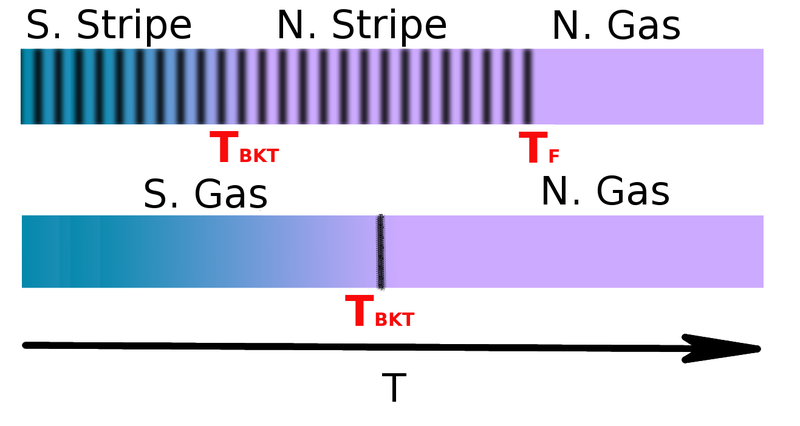Raúl Bombín Escudero defends his thesis on dipolar systems in the degenerate quantum regimen
Dec 30, 2019
Raúl Bombín Escudero defended his thesis, co-directed by Jordi Boronat Médico and Fernando Pablo Mazzanti Castrillejo on December 13 on the North Campus titled "Ultracold bose and fermi dipolar gases: a quantum Monte Carlo study", the thesis presents a study on dipolar systems in the degenerate quantum regimen.
The object of study of this thesis are dipolar systems in the quantum degenerate regime. In general dealing with many-body systems and evaluating their properties requires us to deal with the the many-body Schrödinger equation. In the present study we employ different Monte Carlo methods, that allow us to find numerical solutions by employing a set of stochastic techniques. First we introduce the Quantum Monte Carlo methos that we use, starting from the Variational Monte Carlo (VMC) method, which corresponds to the simpler of this methods and allows to obtain variational solutions to the problem. A more accurate description is provided by Diffusion Monte Carlo (DMC), that when dealing with bosons, provides an exact solution for the ground sate of the system. We continue presenting two methods that rely in the Feynman's path integral formalism of quantum mechanics: Path Integral Monte Carlo (PIMC) and Path Integral Ground State (PIGS), that provide exact solutions for the bosonic problem at finite and zero temperature respectively. In order to work with fermions the DMC algorith has to be modified with the FN prescription in order to avoid the sign problem. Doing so, the results obtained with DMC correspond to variational upper bounds to the energy.
First we study the superfluid properties of a system of dipolar bosons that are fully polarized and in which atoms are restricted to move in the plane. We also consider that the dipolar moments form a certain tilting angle α with the axis perpendicular to the plane, what allows to introduce anisotropy in the system. The phase diagram at zero temperature of this system reveals the existence of three different phases: gas, stripe and solid. Here we focus on the characterization of the superfluid properties across that phase diagram. Our calculations allow to address the question of whether the stripe phase of this system could be a candidate for the supersolid:a system in which two U(1) symmetries are broken simultaneously. One of this symmetries is related to the breaking of phase invariance, and the other one to the breakage of continuous traslational symmetry. This would allow a system to to simultaneously exhibit spatial long-range order and supporting a superflow. In a two-dimensional system, the superfluid properties have their own peculiarities, and the transition from the superfluid to normal phase is driven by the appearance of topological defects and is supposed to follow the Berezinskii–Kosterlitz–Thouless (BKT) scenario. By the employment of DMC and PIGS, we report finite superfluid and condensate fractions both in the gas and stripe phases. Then, the study is completed at finite temperature, where the use of PIMC allows to characterize the BKT transition and report the critical temperature at which it occurs in the gas and stripe phase. Finally, by direct comparison with the predictions of the Luttinger Liquid theory, we explicitly show that the stripe phase can not be described as an ensemble of 1D isolated systems.
Later we study the fermionic dipolar system in two dimensions, focusing in the case in which all dipoles are polarized along the same spatial direction. We compute the equation of state of the system in a wide range of interaction parameters: in the low density regime, the comparison of our dipolar model with a hard-disks one allows to determine the regime of universality, while at higher densities (before crystallization), we discuss the issue of itinerant ferromagnetism: the possibility of having a polarized phase as the ground state of the system.
Finally study the repulsive Fermi polaron with dipolar interaction, that corresponds to the limit of ultralow concentration of impurities embedded in a bath composed of fermions. Here we determine the regime of universality for this particular problem and compute observables that allow to determine the validity of the quasi-particle picture.

Share: